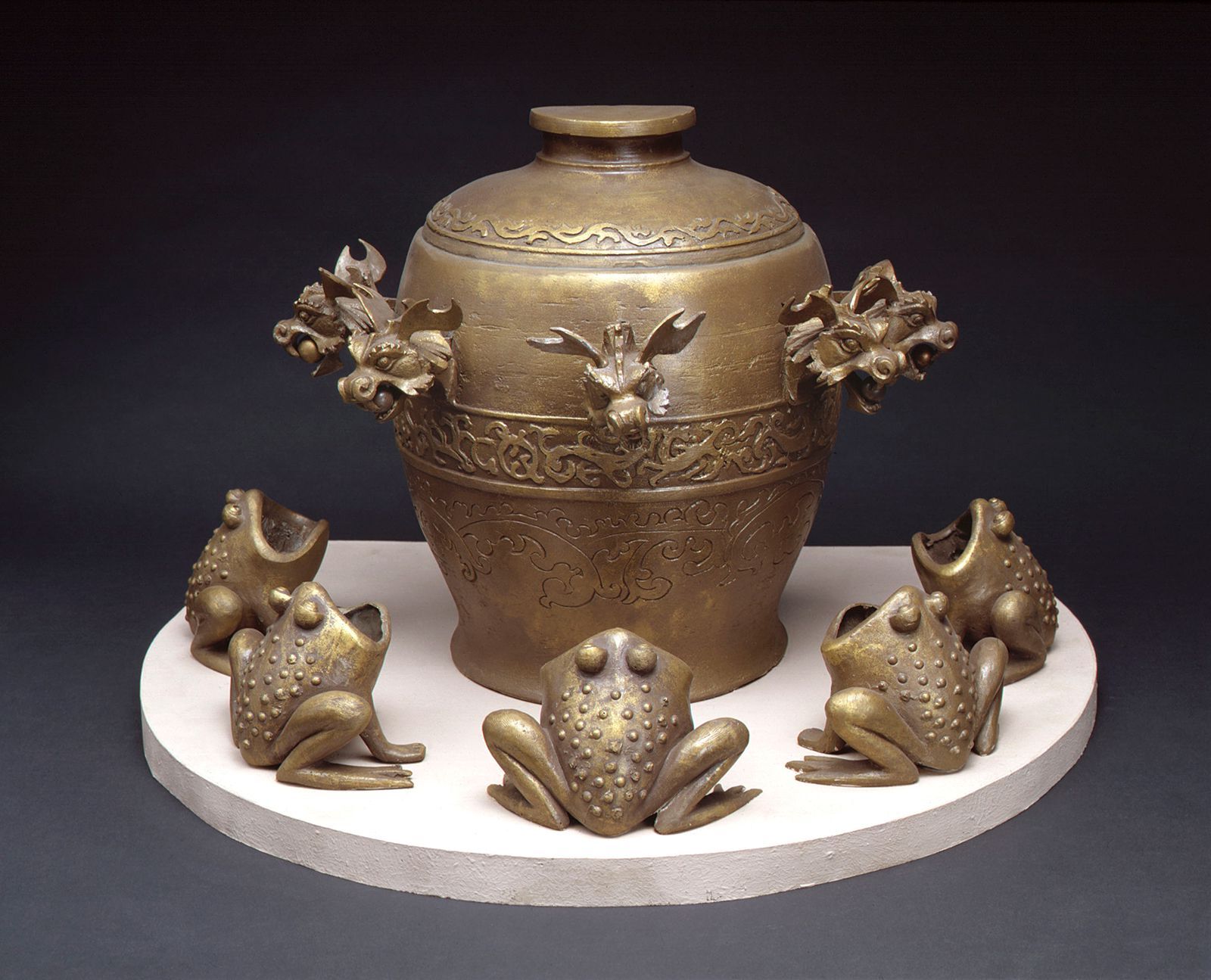
Abigail Williams, born on July 12, 1680, in Salem Village, is a name that echoes through American history due to her pivotal role in the infamous Salem Witch Trials of 1692. Living with her uncle, Reverend Samuel Parris, and his family, Abigail's life took a dramatic turn when she and her cousin Betty Parris began exhibiting strange behaviors. These actions, attributed to witchcraft, ignited a frenzy that led to the imprisonment and execution of many innocent people. But who was Abigail Williams beyond the trials? Despite her significant impact, much of her life remains shrouded in mystery, with her fate after the trials unknown. Dive into the life of this enigmatic figure and uncover the facts that shaped her legacy.
Key Takeaways:
- Abigail Williams, a key figure in the Salem Witch Trials, exhibited manipulative behavior driven by personal vendettas and a desire for power, leading to the imprisonment and execution of innocent people.
- Abigail Williams' actions serve as a cautionary tale, highlighting the dangers of mass hysteria and false accusations, and continue to captivate audiences through various adaptations and interpretations.
Abigail Williams: The Mysterious Afflicted Girl of the Salem Witch Trials
Abigail Williams is a name that echoes through American history, primarily due to her pivotal role in the Salem Witch Trials of 1692. Despite her significant impact, much about her life remains shrouded in mystery. Let's explore the life and actions of this enigmatic figure.
Early Life and Living Arrangements
Abigail's early years and living situation set the stage for her later actions during the witch trials.
-
Abigail Williams was born on July 12, 1680, in Salem Village, now Danvers, Massachusetts. Little is known about her parents, but it is believed they died when she was young.
-
She lived with her uncle, Reverend Samuel Parris, after her parents' death. This household included Parris's daughter Betty and two slaves, Tituba and John Indian.
-
Tituba, a slave from Barbados, had a significant influence on Abigail and Betty. Her stories and practices fascinated the girls and played a role in the events that unfolded.
The Afflicted Girls and Their Strange Behaviors
Abigail's actions, along with those of other girls, sparked the infamous witch trials.
-
Abigail Williams was one of the first afflicted girls in the Salem Witch Trials. She and Betty Parris began exhibiting strange behaviors like fits and screaming.
-
The girls played a game called "Venus glass," which involved fortune-telling. This practice was considered witchcraft by the Puritan community.
-
In January 1692, Reverend Parris called for a doctor to examine the afflicted girls. The doctor, believed to be William Griggs, found no physical illness and concluded they were bewitched.
Abigail's Fits and Accusations
Her fits and subsequent accusations fueled the hysteria that led to the trials.
-
Abigail's fits became more frequent and intense. During one fit, she accused Goodwife N. of bewitching her.
-
She accused 57 people of witchcraft during the trials. Her accusations were often based on trivial matters or personal grudges.
Historical Context and Impact
The Salem Witch Trials occurred in a time of great fear and superstition.
-
The trials took place in a deeply superstitious Puritan community. Fear of witches was rampant, and Abigail's accusations contributed to the hysteria.
-
Her false accusations led to the imprisonment and execution of many innocent people. Families were torn apart, and lives were destroyed.
Abigail in Popular Culture
Abigail Williams has been portrayed in various forms of popular culture, highlighting her lasting impact.
-
In Arthur Miller's play "The Crucible," Abigail is portrayed as a complex character. The play fictionalizes her age and includes an affair with John Proctor.
-
The 1996 film adaptation of "The Crucible" starred Winona Ryder as Abigail. This portrayal further cemented her place in popular culture.
-
She appears in other works, such as John Neal's novel "Rachel Dyer" and the American black metal band Abigail Williams.
Motivations and Character Traits
Understanding Abigail's motivations and character traits helps explain her actions.
-
Abigail sought attention and validation in a society where young women had limited agency. Her actions gave her a sense of control and power.
-
Her affair with John Proctor and his rejection played a significant role in her actions. This personal vendetta fueled her accusations against Elizabeth Proctor.
-
Fear also drove Abigail's behavior. She witnessed the consequences of being accused of witchcraft and sought to protect herself.
-
Her character traits included dishonesty, manipulation, and a desire for power. She was able to deceive others with ease.
Disappearance from Records
After the trials, Abigail vanished from historical records, leaving many questions unanswered.
-
Abigail Williams disappeared from historical records around 1696. Her fate remains unknown.
-
Some speculate she may have left Salem with her uncle, Reverend Parris. This theory remains unconfirmed.
Influence on Historical Accounts
Abigail's actions have been documented and analyzed by various historians and writers.
-
Reverend John Hale wrote about an unnamed woman whose "diabolical manifestation" stayed with her till death. Some believe this could be Abigail.
-
Tituba's influence on Abigail and Betty was significant. Her stories and practices contributed to the girls' fascination with the supernatural.
-
Betty Parris, Abigail's cousin, was also one of the first afflicted girls. Her behavior and accusations were closely tied to Abigail's.
Key Events and Figures in the Trials
Several key events and figures played crucial roles in the Salem Witch Trials.
-
Martha Corey's arrest disrupted church services. Abigail's accusations against her further escalated tensions.
-
Reverend Samuel Parris played a significant role in the trials. His daughter and niece were among the first afflicted girls.
-
Doctor William Griggs examined the afflicted girls but found no physical signs of illness. This led to the belief that they were bewitched.
-
Martha Corey was one of the first adults accused of witchcraft. Her presence at church services disrupted by Abigail's fits fueled the witch hunt.
-
Sarah Good was executed on July 19, 1692, along with four other women. This marked a turning point in the trials.
-
Tituba survived the trials and was released from jail a year later. Reverend Parris paid her prison fees and sold her.
Legacy and Historical Significance
Abigail Williams' actions during the Salem Witch Trials left a lasting legacy.
-
The trials highlighted the dangers of mass hysteria and false accusations. Abigail's actions serve as a cautionary tale.
-
Her character symbolizes the sexual repression of Puritans in "The Crucible." Her affair with John Proctor and accusations against Elizabeth Proctor highlight societal pressures.
-
Abigail's character development in "The Crucible" is complex and multifaceted. She evolves from an innocent-looking servant to a manipulative and deceitful character.
-
While "The Crucible" is a fictionalized account, it captures the essence of Abigail's role in the trials. There is no historical evidence to support the affair with John Proctor.
-
Abigail Williams' legacy extends beyond the Salem Witch Trials. She has become a symbol of the dangers of mass hysteria and false accusations.
-
Her character continues to captivate audiences through various adaptations and interpretations. Abigail serves as a reminder of the importance of critical thinking and due process.
Abigail Williams: A Cautionary Tale
Abigail Williams' story is a stark reminder of the dangers of mass hysteria and false accusations. Her actions during the Salem Witch Trials led to the imprisonment and execution of many innocent people. Living with her uncle, Reverend Samuel Parris, and influenced by the household's complex dynamics, she became one of the first afflicted girls. Her accusations, driven by fear, manipulation, and a desire for power, fueled the chaos of the trials. Despite her young age, she managed to deceive and control those around her, leaving a lasting impact on American history. After the trials, she vanished from records, her fate unknown. Abigail's legacy serves as a powerful lesson about the importance of critical thinking and due process in the face of fear and superstition. Her story continues to captivate and caution, reminding us of the destructive power of unchecked fear.
Frequently Asked Questions
Was this page helpful?
Our commitment to delivering trustworthy and engaging content is at the heart of what we do. Each fact on our site is contributed by real users like you, bringing a wealth of diverse insights and information. To ensure the highest standards of accuracy and reliability, our dedicated editors meticulously review each submission. This process guarantees that the facts we share are not only fascinating but also credible. Trust in our commitment to quality and authenticity as you explore and learn with us.


